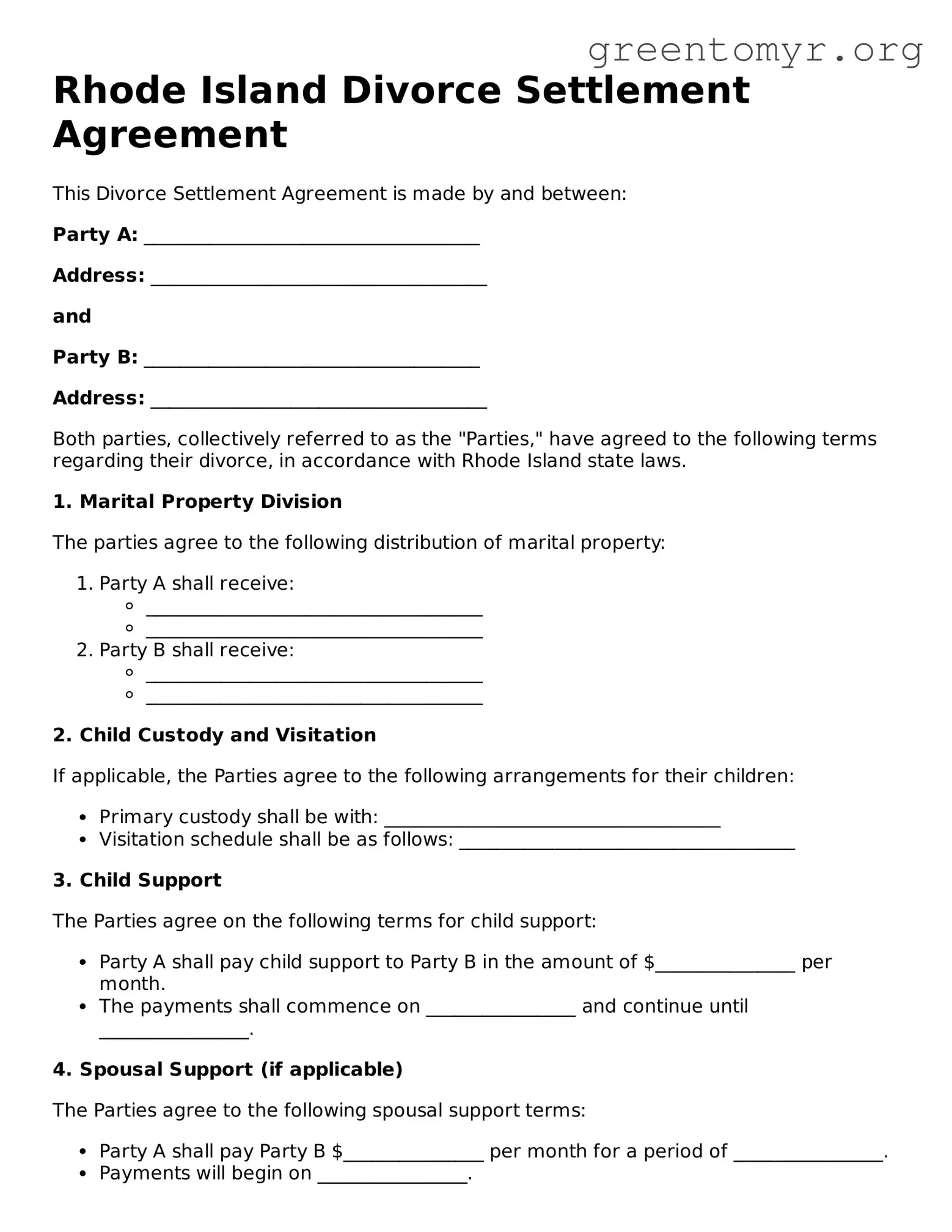Rhode Island Divorce Settlement Agreement
This Divorce Settlement Agreement is made by and between:
Party A: ____________________________________
Address: ____________________________________
and
Party B: ____________________________________
Address: ____________________________________
Both parties, collectively referred to as the "Parties," have agreed to the following terms regarding their divorce, in accordance with Rhode Island state laws.
1. Marital Property Division
The parties agree to the following distribution of marital property:
- Party A shall receive:
- ____________________________________
- ____________________________________
- Party B shall receive:
- ____________________________________
- ____________________________________
2. Child Custody and Visitation
If applicable, the Parties agree to the following arrangements for their children:
- Primary custody shall be with: ____________________________________
- Visitation schedule shall be as follows: ____________________________________
3. Child Support
The Parties agree on the following terms for child support:
- Party A shall pay child support to Party B in the amount of $_______________ per month.
- The payments shall commence on ________________ and continue until ________________.
4. Spousal Support (if applicable)
The Parties agree to the following spousal support terms:
- Party A shall pay Party B $_______________ per month for a period of ________________.
- Payments will begin on ________________.
5. Additional Provisions
Any other agreements not covered above:
- ____________________________________________________________________
- ____________________________________________________________________
6. Acknowledgment
Both Parties acknowledge that they have read and understand this agreement, and they enter into it voluntarily.
Signatures:
Party A Signature: ____________________________ Date: _______________
Party B Signature: ____________________________ Date: _______________
This agreement is binding upon both Parties following execution.
